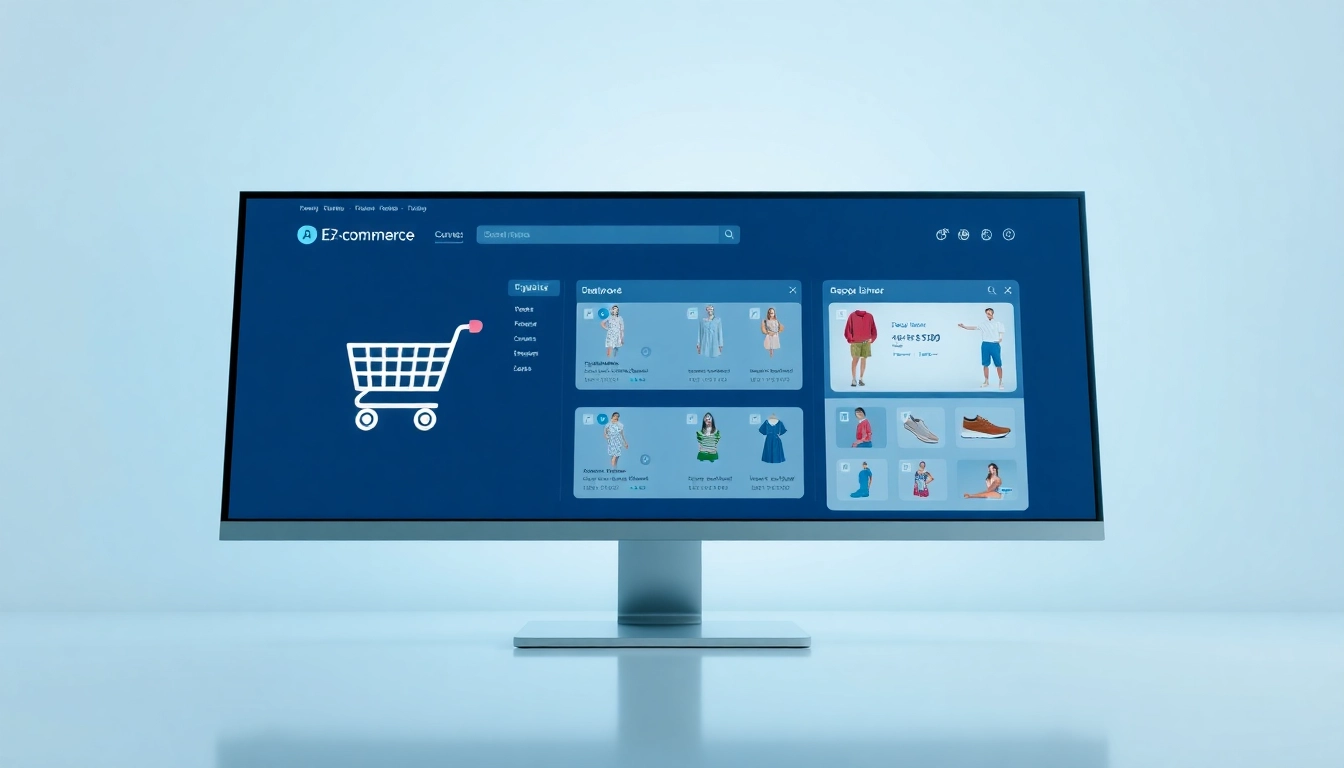Technology-Driven Growth: Elevate UX, AI Ops, and Market Positioning for Modern Business

Across industries, technology shapes how brands attract, engage, and convert customers. A well-crafted UX, paired with intelligent AI operations and data-driven strategy, can unlock faster workflows, happier users, and stronger business outcomes. This article distills practical guidance from the latest best practices in e-commerce UX, AI deployment, customer interactions, STP (segmentation, targeting, positioning), cutting-edge construction design, and multi-language coding—offering actionable steps you can implement today. The alignment between strategy and technology is what enables teams to move from ideas to measurable outcomes.
What Makes Customers Click: Unlocking Better UX and Checkout Experiences in E-commerce
UX Fundamentals for Ecommerce
In a crowded marketplace, users decide within seconds. Clear navigation, relevant search results, and compelling product pages reduce cognitive load and build confidence. Prioritize accessible design, readable typography, consistent micro-interactions, and visible trust signals such as secure badges, transparent pricing, and honest delivery estimates. A responsive layout that works seamlessly on mobile and desktop ensures you capture intent wherever it originates.
Checkout Efficiency and Conversion
Friction during checkout is the single largest leakage point. Streamline with guest checkout, simplified forms, auto-fill, address validation, and multiple payment options. Show a clear progress indicator, display total costs early, and provide transparent shipping and return policies. A data-driven approach—A/B testing form length, button copy, and shipping options—can cut cart abandonment dramatically. A real-world pattern: reducing form fields and eliminating redundant steps can yield meaningful lift without sacrificing security.
Best Practices for AI Deployment in Business Operations
Governance of AI Projects
Successful AI programs start with governance: an AI charter, defined stakeholders, and guardrails for ethics, bias, and accountability. Establish a model registry, version control, and an auditable decision trail. Create a cross-functional governance group that links business owners, data scientists, and legal/compliance to ensure alignment with strategic goals and risk appetite.
Data Quality, Privacy, and ROI
AI effectiveness hinges on data quality. Implement rigorous data curation, labeling standards, and lineage tracking. Prioritize privacy by design—data minimization, consent management, and robust access controls—to satisfy regulatory requirements and customer expectations. Define ROI with concrete metrics: time-to-value, error reduction, throughput gains, and improvements in customer satisfaction tied to measurable business outcomes.
Transforming Customer Interactions for Enhanced Business Outcomes
Omni-Channel Engagement
Customers move fluidly across channels. A unified CRM with consistent messaging, context-aware chat, and synchronized order histories creates a cohesive experience. Design channel-specific optimizations—fast mobile chat, proactive email updates, and in-app notifications that respect user preferences—while preserving a single source of truth for customer data.
Feedback Loops and Personalization
Closing the loop is essential. Implement regular CSAT/NPS surveys, sentiment analysis, and automated feedback prompts post-purchase. Leverage these signals to personalize content, recommendations, and promotions at scale. Balanced personalization respects privacy while delivering relevance, driving engagement and repeat purchases.
STP in Action: A Hands-On Guide from Market Segmentation to Precise Positioning
STP Fundamentals for Modern Brands
Segmentation divides the market into meaningful groups; targeting selects the most viable segments; positioning defines the value proposition that resonates with each group. A practical STP cycle links data insights to the product narrative, ensuring resources are focused where they deliver the greatest impact.
Technology-Enabled Segmentation: Signals and Personas
Use behavioral signals (site visits, cart activity), demographic data, and purchase history to construct robust personas. For example, you might profile three archetypes: the value-focused shopper, the early adopter, and the brand-loyal premium seeker. Each persona informs channel choice, messaging tone, and feature prioritization, aligning product development with real user needs.
Positioning with Technology Differentiators
Highlight distinctive tech-enabled benefits—speed, personalization, security, or transparency. Positioning claims should be anchored in measurable capabilities (e.g., AI-driven recommendations that increase relevance by X%) and reinforced with proof points, case studies, or performance metrics that differentiate you from competitors.
Uncovering Cutting-Edge Design in Contemporary Construction Projects
Adopting Technology in Design Decisions
Modern construction design blends BIM, collaboration platforms, and data-driven modeling. Early integration of digital tooling reduces rework, improves coordination, and accelerates decision-making. Embrace standardized data schemas, interoperable formats, and version-controlled design reviews to keep teams aligned across disciplines.
Digital Twins, BIM, and Parametric Design
Digital twins simulate performance and usage scenarios, while BIM provides a shared 3D model for stakeholders. Parametric design enables rapid exploration of form and function, allowing teams to test efficiency, sustainability, and cost trade-offs before breaking ground. Together, these tools enable proactive design optimization and risk mitigation.
From Concept to Construction: Implementation Steps for Tech-Driven Projects
Start with clear objectives and data governance. Develop a phased roadmap: 1) model establishment, 2) stakeholder alignment, 3) pilot projects, 4) iterative scaling. Prioritize interoperability, define success metrics, and establish feedback channels to keep projects adaptable as requirements evolve.
Multi-language Coding: Why it matters for interview success
Core Concepts for Tech Interview Readiness
Focus on algorithms, data structures, and system design fundamentals. Practice beyond language syntax—emphasize problem understanding, edge cases, trade-offs, and scalable design. A strong foundation in complexity analysis and testing strategies accelerates performance in real-world tasks.
Multi-Language Coding: Essential Tech Skills for Hiring
In today’s teams, polyglot coding unlocks flexibility and collaboration. Demonstrating fluency across multiple languages and paradigms signals adaptability, maintainability, and an ability to integrate with diverse tech stacks. Highlight cross-language design decisions in your portfolio and interviews.
Building a Portfolio: Demonstrating Technology Fluency
Showcase projects that reveal your reasoning, not just the final result. Include diagrams, API contracts, test cases, and performance benchmarks. A well-documented repo with clear readmes and reproducible environments helps interviewers assess your practical capabilities quickly.
Key Tips for Hiring Designers Without Breaking the Bank
Cost-Effective Hiring Tactics
Leverage a mix of remote freelancers, part-time contractors, and structured internship programs to access broad talent without onerous commitments. Use portfolio-driven selection augmented by trial tasks that reflect real-world scope, ensuring you invest where it most impacts outcomes.
Assessment Protocols
Adopt a standardized rubric for portfolio reviews, including visual quality, problem framing, research depth, and clarity of rationale. Include short, paid design challenges that align with your product goals to gauge practical skills and collaboration style.
Onboarding for Value
Implement a concise ramp plan: define initial projects, set 30-, 60-, and 90-day milestones, and establish clear success metrics. Early wins—such as a UI refinement or a usability audit—can build momentum and demonstrate ROI quickly.
By integrating these disciplined approaches—UX excellence, responsible AI, data-informed segmentation, tech-driven design, and pragmatic hiring—you can drive meaningful, measurable improvements across customer journeys, operations, and development pipelines. The disciplined application of technology, paired with user-centered design, remains a proven catalyst for sustainable growth.


